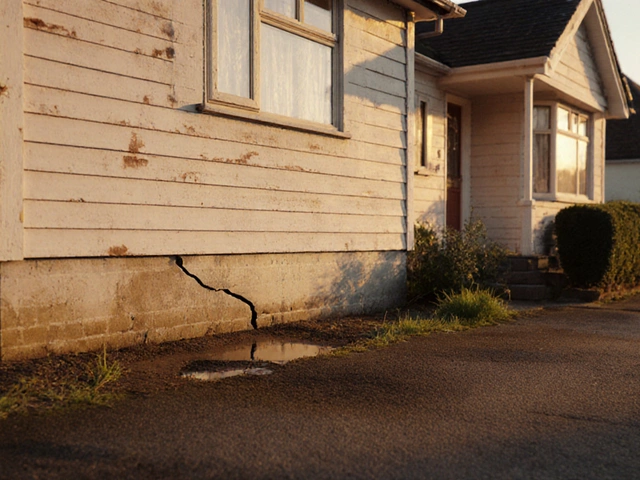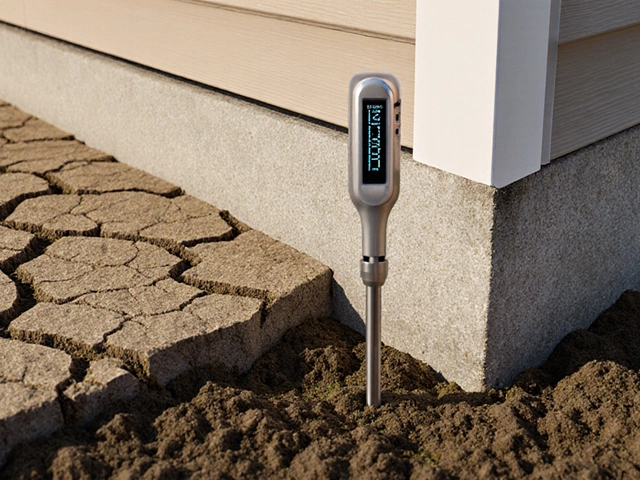Major Foundation Issues: Definition, Signs, Causes & Repair Guide
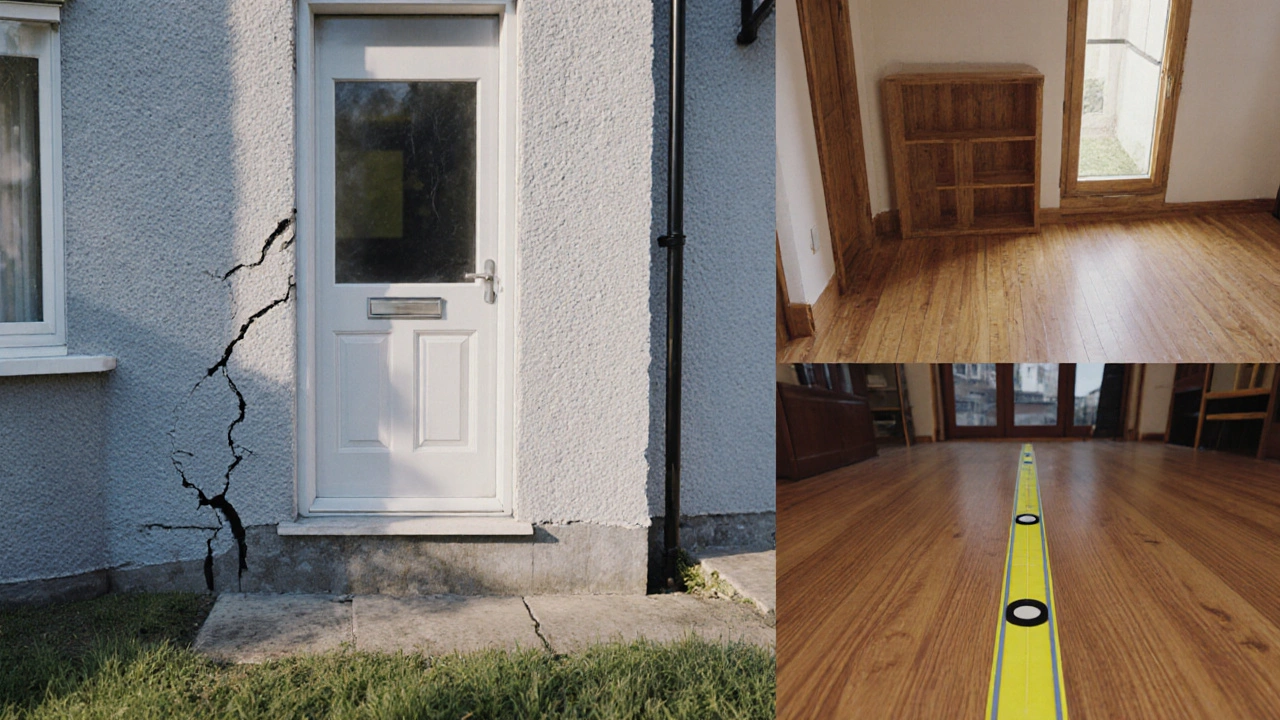
Foundation Issue Assessment Tool
Foundation Problem Checklist
Check any symptoms you're experiencing. Three or more indicates a potential major foundation issue requiring professional evaluation.
Results will appear here
After clicking the button above, your assessment will display here.
Key Takeaways
- A major foundation issue is a structural problem that threatens a building’s stability, not just an aesthetic flaw.
- Typical signs include visible cracks over 1/4 inch, uneven floors, doors that stick, and progressive bowing of walls.
- The main drivers are soil movement, water intrusion, poor original construction, and external loads.
- When any of these signs appear, an inspection by a licensed structural engineer is essential.
- Repair methods range from pier installation to slab jacking and improving drainage; regular maintenance can prevent most major issues.
What Makes a Foundation Issue “Major”?
In the world of home health, not every crack or dip deserves a panic reaction. A major foundation issue is a structural deficiency that compromises the load‑bearing ability of a building’s foundation, leading to progressive damage if left untreated. The key word is “progressive”: the problem will get worse over time, potentially causing costly repairs or even making the house unsafe.
Minor issues, like hairline surface cracks, generally stay static and don’t affect the building’s integrity. Major issues, on the other hand, trigger movement in the framing, shift doors and windows, and can cause uneven stress on roofs and walls.
Common Types of Major Foundation Problems
Below are the most frequently encountered serious foundation conditions. Each has distinct visual cues and underlying mechanisms.
- Foundation settlement is the downward movement of a foundation caused by soil compression, water loss, or overloaded footings. It often shows up as high‑point walls, sagging ceilings, or doors that won’t close properly.
- Soil heave is upward pressure exerted by expanding clay soils, frozen ground, or excessive moisture. Heave creates lifting cracks and warped floorboards.
- Large horizontal cracks (≥¼ inch) appearing on interior walls, foundation walls, or concrete slabs often signal structural stress.
- Wall bowing occurs when lateral pressure pushes a foundation wall outward, visible as a curve in the wall surface.
- Uneven floors that can be measured with a level; a variance of more than ¼ inch across 10 feet is a red flag.
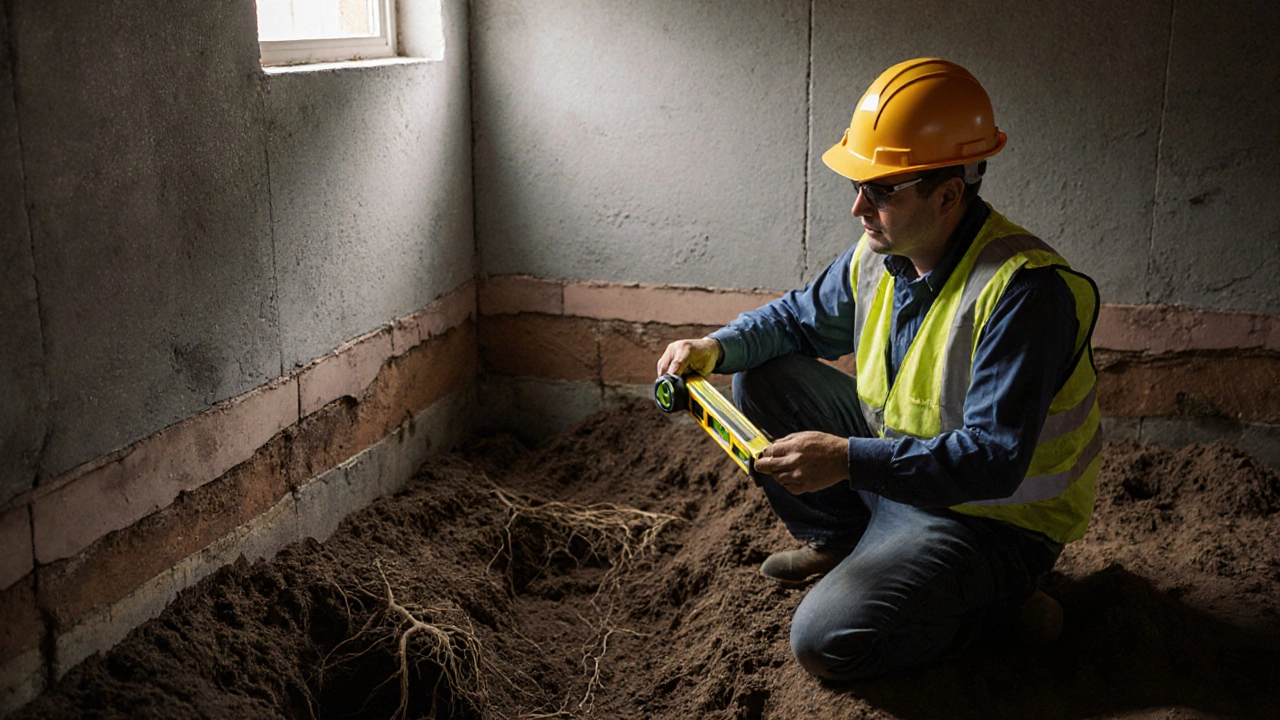
How to Spot a Major Issue - A Practical Checklist
Before you call a professional, walk through the house with this short list. Tick any item you notice; three or more ticks usually mean you’re dealing with a major problem.
- Cracks wider than ¼ inch in foundation walls, stairs, or basement floors. \n
- Doors or windows that stick, jam, or no longer close flush.
- Noticeable sloping or sagging floors, especially in high‑traffic areas.
- Visible gaps between exterior wall finishes and the ground.
- Bow‑shaped or bulging foundation walls.
- Moisture stains, mold, or a musty odor in the basement that persists despite a functioning sump pump.
- Cracks that appear to be growing when you measure them over a week.
If any of these symptoms are present, postpone DIY fixes and schedule a thorough evaluation.
Root Causes Behind Major Foundation Issues
Understanding the “why” helps you choose the right remedy and prevent recurrence.
- Soil movement: Expansive clays swell with water and shrink when dry, creating vertical and horizontal forces.
- Water intrusion: Poor drainage, leaking gutters, or a high water table can erode supporting soil and increase hydrostatic pressure.
- Poor original construction: Undersized footings, inadequate reinforcement, or incorrect concrete mix lead to early failure.
- Tree roots: Large trees near the foundation extract moisture, causing the soil to settle around the footings.
- Improper loading: Adding heavy structures (like a hot tub) without reinforcing the slab can overload the foundation.
When to Call a Professional - The Role of a Structural Engineer
Not every crack warrants a full‑blown repair, but a licensed structural engineer is the authority who can differentiate cosmetic damage from a major foundation issue. Look for these triggers:
- More than two of the checklist items are present.
- Cracks are widening by more than 1/16 inch in a month.
- Visible wall bowing or bulging.
- Persistent moisture problems despite a functioning sump pump.
The engineer will perform a level survey, possibly embed monitoring plates, and produce a repair plan that meets local building codes.
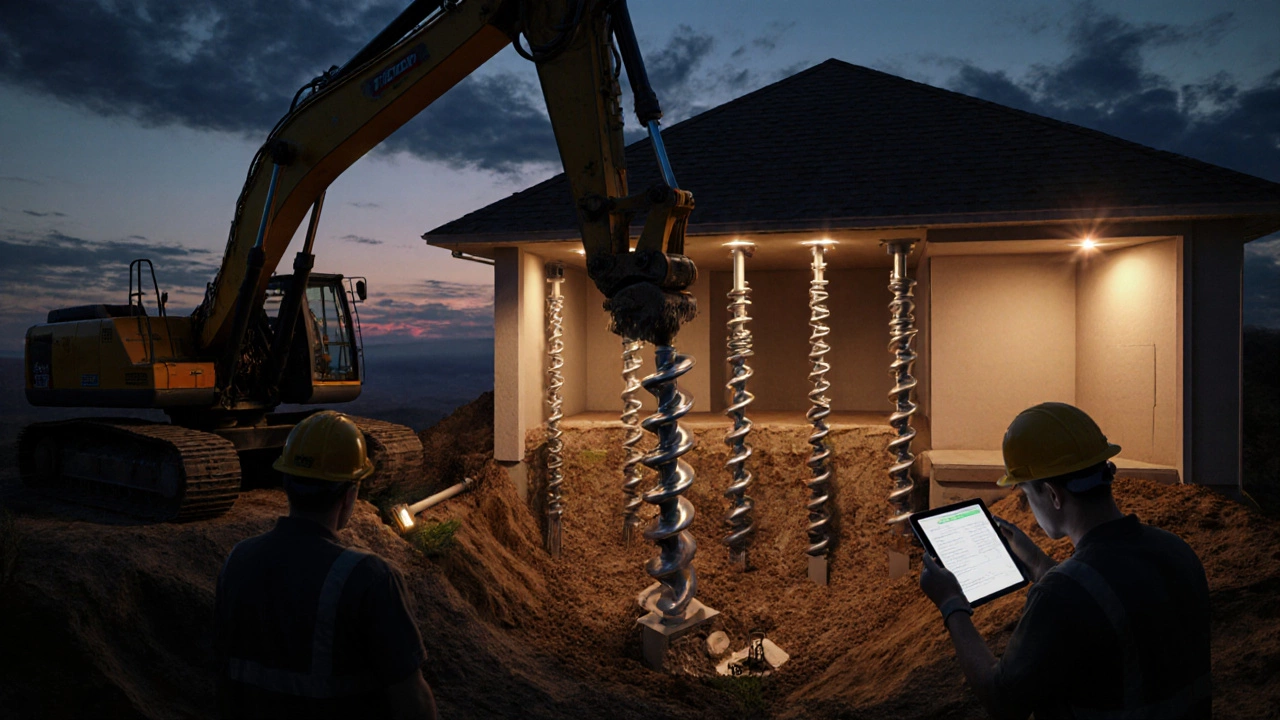
Repair Options - Matching the Problem to the Solution
Below is a quick comparison of the most common repair methods used for major foundation issues. Choose the technique that addresses the underlying cause, not just the symptom.
| Method | Best For | Typical Cost (US$) | Installation Time |
|---|---|---|---|
| Concrete Piers (push or drilled) | Settlement, deep soil compression | 6,000 - 12,000 | 1-3 days per pier |
| Helical Piers | Heave‑prone soils, limited access areas | 8,000 - 14,000 | Same day to 2 days |
| Slab Jacking (mudjacking) | Low‑lying spots, minor settlement | 3,000 - 7,000 | 1-2 days |
| Underpinning | Severe settlement, large‑scale movement | 12,000 - 25,000 | 2-4 weeks |
| Drainage System Upgrade | Water‑related heave, hydrostatic pressure | 2,000 - 6,000 | 3-7 days |
All repairs should be followed by a post‑repair inspection to confirm that the foundation has been stabilized.
Prevention & Ongoing Maintenance Checklist
Stopping a problem before it becomes major saves money and stress. Use this seasonal maintenance plan.
- Spring: Clean gutters, ensure downspouts direct water at least 6 feet from the house, inspect the grading slope.
- Summer: Check for standing water after rainstorms, monitor interior cracks with a crack‑monitoring gauge.
- Fall: Test the sump pump, seal any foundation cracks with epoxy if they’re less than ¼ inch.
- Winter: Keep soil around the foundation from freezing, avoid over‑watering lawns near the house.
- Year‑round: Avoid planting large trees within 15 feet of the foundation, and limit heavy loads on upper floors.
Document any changes in a simple log-date, observation, and photos. This record can be invaluable if you later need a professional assessment.
Frequently Asked Questions
What crack width indicates a major foundation issue?
Cracks wider than ¼ inch (about 6mm) in a foundation wall or slab are generally considered serious. Smaller, hairline cracks are often cosmetic, but always measure them over time.
Can I fix a settlement problem myself?
Minor settlement (a few inches) can sometimes be mitigated with mudjacking, but most cases require professional piers or underpinning. DIY fixes risk worsening the problem and may void insurance.
How long does a typical pier installation take?
Each pier usually takes 1-3 days to install, depending on access and soil conditions. A full‑house repair can be completed in 1-2 weeks.
What’s the difference between heave and settlement?
Settlement is downward movement caused by soil compression or loss of moisture. Heave is upward pressure, often from expanding clay or freeze‑thaw cycles, pushing the foundation up.
Do foundation repairs affect home resale value?
Yes. A documented repair, especially one done by a licensed engineer, can restore or even increase resale value because buyers see the risk has been mitigated.
